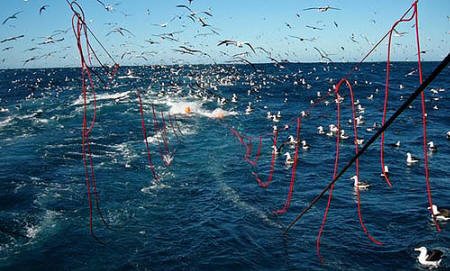The American Bird Conservancy and Pennsylvania State University’s Center for Environmental Informatics have created an interactive website to help inform fishers, conservationists and “those promoting fishery sustainability” to assess the risk of accidental capture of seabirds in fisheries, and to take action to reduce bycatch.
“Featuring a database with profiles of 378 seabird species, the website offers a unique way to access a wealth of information. After drawing a map that outlines an area of interest, one click produces a list of seabirds known to occur there, along with useful information for assessing the risk posed to seabirds by fishing gear. Users can:
create fishery area maps and determine which birds occur there;
review protected status, population size, and range maps;
produce reports with information such as diving depth and diet that may indicate the risk posed by fishing gear; and
find resources on how to reduce bycatch.
In the interactive map feature, users can overlay the base map with layers showing bird species ranges, as well as jurisdictions such as Exclusive Economic Zones (EEZs) or protected areas. While the intent is to help minimize bycatch among all seabirds, this component of the site will be particularly valuable in reducing the risk to vulnerable species.
With the wealth of information provided about each species, fisheries managers can make changes to their fishing methods that may reduce or eliminate the accidental injury or killing of bird species found in their area. These fishermen could consider adding paired streamer lines to scare birds away from the longlines as they are being set or setting their lines at night when birds such as albatrosses, which are especially susceptible to bycatch, are less active."

Paired bird-scaring lines behind a South African trawler keep Black-browed Albatrosses away from the warp cable
Photograph by Barry Watkins
"In addition to providing information on seabirds in a geographic area, the web tool features a search function that allows a user to obtain profiles of specific species or taxonomic groups, or to search for threatened species. The site allows fishermen to identify the fishing gear they use and search for birds known to interact with that gear. The site provides information for 17 different types of fishing gear, including set or drift gillnets, different types of longlines, trawls, seines, hand lines, pots, and traps.”
The site is explained in an introductory video. Click here for the press release.
John Cooper, ACAP Information Officer, 19 September 2015

 English
English  Français
Français  Español
Español